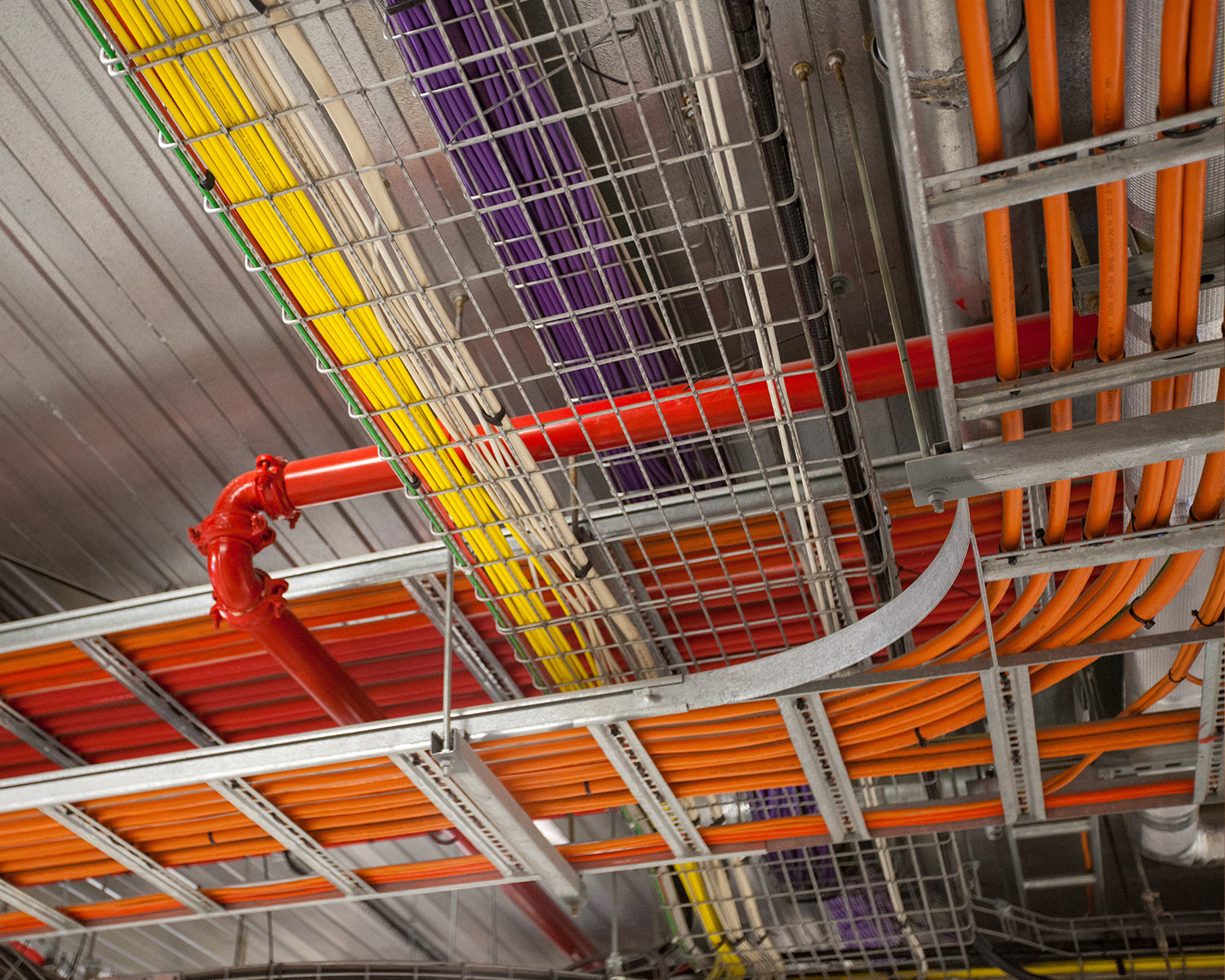Services
Data Cabling

Data Cable Solutions
Data cabling systems are a vital network of cables for most businesses, and provide the infrastructure that supports truly vital elements of your business, such as:
- Phone systems
- Building-wide Internet
- Wifi equipment
- Room booking systems
- LED lighting systems
- Security and CCTV cameras
Because data cable installation offers so much in the way of value for your business, making sure you get the right layout and setup, along with the right electrician to do the job quickly and efficiently, all matters. At Rotric we proudly offer expert guidance and solutions giving our clients ultimate peace of mind.
What to consider when selecting the right data cabling
Getting quality data cabling is not just about who does the installation. It is also about the cable itself. When you are ready to start on your data cabling installation, there are three main categories of cabling to consider as you design the system. Each one of the categories has their own benefits, so carrying out a cost vs benefit analysis before deciding on the category can help. Then you will be sure you are choosing the right category and making a good investment. Working with a professional can help you understand which category you will need, but here is some of the information you will want to know about each category.
Cat6a Cable
If you want the best-performing copper cabling system on the market, you will want to choose Cat6Aa Cable to be clear, you can get cables that offer you a higher level of performance. But you will not be able to get much length in these cables. By choosing the Cat 6A Cable instead, you get good performance and a better length, which gives you an overall better level of total performance for most applications. By choosing this category of data cabling, you can expect:
- Frequency 500MHz
- Max cable length 100m
- Data Performance 10Gbs
- Max Speed 100Gbs
Cat6 Cable
Using Cat6 Cable will give you improved performance when compared with Cat5e. You can expect to get:
- Frequency 250MHz
- Max cable length 100m
- Data Performance 1Gbs
- Max Speed 10Gbs
You will also future-proof your data cabling services to some extent, as you will generally have at least some opportunity to upgrade your services and abilities without the need for a new cabling installation. This does not guarantee that you will never have to upgrade, but it does reduce the chances that you will have to upgrade soon.
Cat5e Cable
Cat5e Cable is the most affordable application category when choosing data cabling services. It is a versatile cable that is quick and easy to install, but there is a trade-off for the ease of installation. You are going to see limited performance with this category of cable, which may or may not matter for your particular application. Some companies only need a limited amount of performance, and this cable would be enough for what they are trying to do or how they use their systems. It all comes down to what you are trying to accomplish. Just keep in mind that, with this category, you will be limited to:
- Frequency 100MHz
- Max cable length 100m
- Data Performance 100Mbs
- Max Speed 1GBs
You will also lose the ability to future-proof your system. In other words, requiring more power or performance later will require a new cable installation. When you are investing in a structured cabling system, the idea is generally to spend more on the initial investment to future-proof your installation. Not every business can do that, but those that can should definitely consider doing so. One of the main reasons for that is the Internet of Things (IoT). Rapid innovation is occurring everyday, as more and more applications and technology move over to the internet. In the near future, a data point will be necessary for a huge variety of things not currently available on the market.
Fibre Optic Cable
Choosing the right fibre optical cable for your needs is very important. But which one is the right option? There are single-mode and multi-mode choices, and they have distinct differences. Here is what you should know about each type of cable, and what the differences are between them, so you can pick the best kind of cable for the equipment you have and how it is used.
By selecting the proper cable, you will not only protect your equipment from harm but you will make sure that equipment is operating as well as possible through the cable provided.
It can be easy to get the wrong cable if you aren’t sure which one will be best for your particular needs. Choosing the wrong fibre optic cable can mean you don’t get the signal strength you need. That’s especially true with long-distance applications that require a higher speed. Using multi-mode cable for these applications won’t work correctly, and can cost you time and money to replace.
Rather than take that risk, make sure you work with a data cabling professional right from the beginning. Then you’ll get what you need, and can use your optical fibre cable as soon as the installation is complete.
Determining what fibre optic installation would be best is generally based on the transmission distance to be covered. Short distances usually mean multi-mode cable, while longer distances mean single-mode cable. Additionally, it is important to consider:
The overall budget allowed has to be addressed.
If the distance is less than 2km, multi-mode fibre will work well and transmission system costs (transmitter and receiver) will be more affordable.
If the distance to be covered is greater than 2km, single-mode fibre is really the only choice.
Transmission systems designed for use with single-mode fibre will typically cost more than multi-mode options due to the increased cost of the laser diode.
Let’s talk about your next project
Contact our friendly team at Rotric for your obligation free quote.
